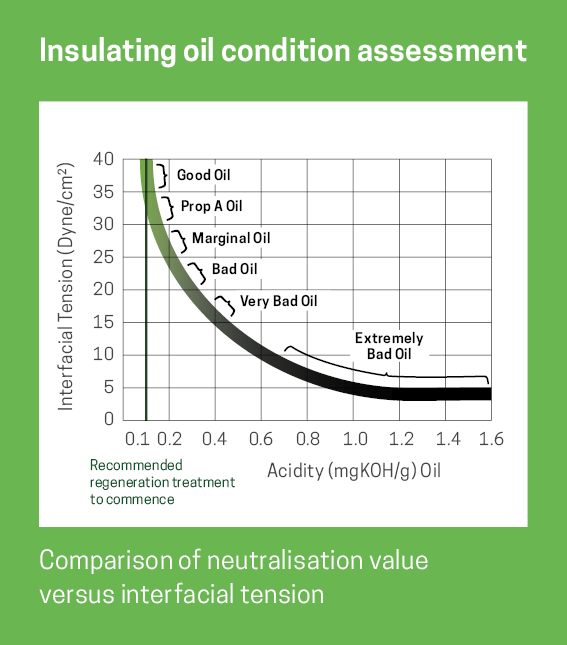Transformers are the core elements of industrial plants with their own supply network, the high-voltage systems of power plants with the transmission network as well as the distribution networks. Repairs or even replacement of transformers are associated with high costs and grid downtimes. However, extended delivery times for new transformers are forcing many operators to maintain their transformers beyond the recommended service life. In this article, we provide tips on how to extend the service life of transformers.
5 aspects that contribute to a long transformer service life
In general, five aspects are important for extending the service life of transformers:
1. Use optimal materials
Of course this already starts with the manufacture of the transformers: suitable insulating materials in the windings and in the core of the transformers help to extend the service life. It goes without saying that a transformer is dimensioned according to its expected performance.
2. Ensure correct operating conditions
Excessively high or low temperatures, as well as high humidity or dirt and dust, are well recognised issues which can shorten the service life of transformers. Therefore, transformers should be operated in a suitable operating environment and the manufacturer's requirements and recommendations should be followed.
3. Avoid overheating or overloading
Temperature is one of the prime factors that affect a transformer's life and in fact, increased temperature is the major cause of reduced transformer life. It is important not to overload transformers: the load should remain within the dimensioned limits. Ensure transformers operate at optimal temperature.
4. Carry out regular inspection and maintenance
Regular inspections ensure that your transformers are in good condition and that all components are functioning properly. Such things as overloading the transformer, moisture in the transformer, poor quality oil or insulating paper, and extreme temperatures affect the insulating properties of the transformer.
5. Use high quality transformer oils.
Using high-quality transformer oils will extend the service life of your transformers: it will improve heat dissipation, help prevent oxidation and ultimately limit corrosion.
Insulating oils - what role do they play in extending the service life of transformers?
Insulating oils are also called transformer oils. They are used in transformers, tap-changers and switchgear; ensure electrical insulation and prevent direct contact of the transformer's electrical components. They also ensure heat dissipation and prevent excessive temperatures.
The condition of the transformer oil is decisive for the service life of the transformer:
- Transformer oils provide improved heat transfer capability.
Insulating oils have good thermal conductivity - they can effectively dissipate heat from the windings of the transformer, thereby lowering the transformer's operating temperature. This in turn reduces the ageing of the insulating materials and the transformer as a whole, providing the transformer is not operated close to it’s maximum capabilities.
- Transformer oils protect against corrosion
Insulating oils also act as corrosion inhibitors, as they prevent contact with the atmosphere with their natural as well as added inhibitors and chemical properties, thus increasing oxidation stability.
- Transformer oils have a cleaning effect
Providing the insulating oils are adequately circulated, this will help remove dirt and particulates from the electrical components of the transformer, helping to improve the performance of transformers and extend their service life. This will also reduce the risk of arcing and further potential damage.
- Transformer oils lubricate moving parts
Insulating oils are also used to lubricate the moving parts of the transformer or tap changer and prevent them from friction and damage. This also helps to extend the service life of the transformer.
How long does the insulating oil in transformers last?
The service life of insulating oil in transformers depends on the operating time and temperature and the ambient conditions, as well as the load on the oil and the insulating oil quality.
The insulating oil in transformers is often changed every 10 to 15 years. However, it is better to carry out regular insulating oil monitoring or inspections. This ensures that the transformer oil remains constantly in good condition and thus helps to extend the service life of the insulating oil, the o operational time of transformers whilst also reducing the potential for expensive interventions.
Condition of insulating oil
The following diagram shows a relationship between the interfacial tension and the acid content of the insulating oil. Condition descriptions of the insulating oil in the transformer can be derived from this.

The age of the insulating oil should therefore not be the sole criterion for regeneration or replacement. A regular insulating oil condition assessment can determine the appropriate time for regeneration or oil change and optimise your asset management.
Do you need to replace the insulating oil of your transformers soon? Then we recommend you read this article:
Conclusion
As a plant operator, you can influence the ageing process of your transformers and extend their service life by utilising the right measures. One of them is to maintain focus on the quality of your transformer oil.
Read more about it in this interview:




